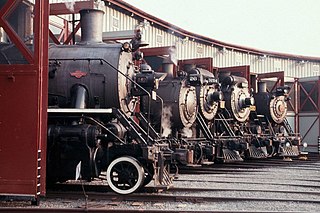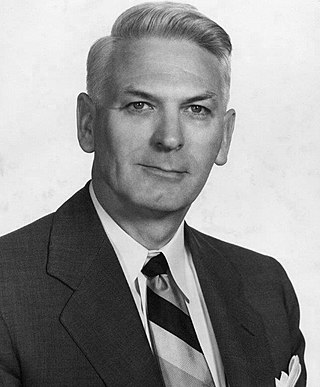
A tram is a rail vehicle that travels on tramway tracks on public urban streets; some include segments on segregated right-of-way. The tramlines or networks operated as public transport are called tramways or simply trams/streetcars. Many recently built tramways use the contemporary term light rail. The vehicles are called streetcars or trolleys in North America and trams or tramcars elsewhere. The first two terms are often used interchangeably in the United States, with trolley being the preferred term in the eastern US and streetcar in the western US. Streetcar or tramway are preferred in Canada. In parts of the United States, internally powered buses made to resemble a streetcar are often referred to as "trolleys". To avoid further confusion with trolley buses, the American Public Transportation Association (APTA) refers to them as "trolley-replica buses". In the United States, the term tram has sometimes been used for rubber-tired trackless trains, which are unrelated to other kinds of trams.

A kit car is an automobile available as a set of parts that a manufacturer sells and the buyer then assembles into a functioning car. Usually, many of the major mechanical systems such as the engine and transmission are sourced from donor vehicles or purchased new from other vendors. Kits vary in completeness, consisting of as little as a book of plans, or as much as a complete set with all components to assemble into a fully operational vehicle such as those from Caterham.

American Automobile Association is a federation of motor clubs throughout North America. AAA is a privately held not-for-profit national member association and service organization with over 60 million members in the United States and Canada. AAA provides services to its members, including roadside assistance and others. Its national headquarters are in Heathrow, Florida.
A classic car is an older car, typically 25 years or older, though definitions vary. The common theme is of an older car of historical interest to be collectible and tend to be restored rather than scrapped. Classic cars are a subset of a broader category of "collector cars". A subset of what is considered classic cars are known as antique cars or vintage cars.

SAE International, formerly named the Society of Automotive Engineers, is a United States-based, globally active professional association and standards developing organization for engineering professionals in various industries. SAE International's world headquarters is in Warrendale, Pennsylvania, 20 miles north of Pittsburgh, Pennsylvania. Principal emphasis is placed on global transport industries such as aerospace, automotive, and commercial vehicles. The organization adopted the name SAE International to reflect the broader emphasis on mobility.

A headlamp is a lamp attached to the front of a vehicle to illuminate the road ahead. Headlamps are also often called headlights, but in the most precise usage, headlamp is the term for the device itself and headlight is the term for the beam of light produced and distributed by the device.
The Corporate Average Fuel Economy (CAFE) standards are regulations in the United States, first enacted by the United States Congress in 1975, after the 1973–74 Arab Oil Embargo, to improve the average fuel economy of cars and light trucks produced for sale in the United States.

A steam car is a car (automobile) propelled by a steam engine. A steam engine is an external combustion engine (ECE) in which the fuel is combusted outside of the engine, unlike an internal combustion engine (ICE) in which fuel is combusted inside the engine. ECEs have a lower thermal efficiency, but carbon monoxide production is more readily regulated.

Development of the automobile started in 1672 with the invention of the first steam-powered vehicle, which led to the creation of the first steam-powered automobile capable of human transportation, built by Nicolas-Joseph Cugnot in 1769. Inventors began to branch out at the start of the 19th century, creating the de Rivas engine, one of the first internal combustion engines, and an early electric motor. Samuel Brown later tested the first industrially applied internal combustion engine in 1826.

Steamtown National Historic Site (NHS) is a railroad museum and heritage railroad located on 62.48 acres (25.3 ha) in downtown Scranton, Pennsylvania, at the site of the former Scranton yards of the Delaware, Lackawanna and Western Railroad (DL&W). The museum is built around a working turntable and a roundhouse that are largely replications of the original DL&W facilities; the roundhouse, for example, was reconstructed from remnants of a 1932 structure. The site also features several original outbuildings dated between 1899 and 1902. All the buildings on the site are listed with the National Register of Historic Places as part of the Delaware, Lackawanna and Western Railroad Yard-Dickson Manufacturing Co. Site.

As of 2013, there were a wide variety of propulsion systems available or potentially available for automobiles and other vehicles. Options included internal combustion engines fueled by petrol, diesel, propane, or natural gas; hybrid vehicles, plug-in hybrids, fuel cell vehicles fueled by hydrogen and all electric cars. Fueled vehicles seem to have the advantage due to the limited range and high cost of batteries. Some options required construction of a network of fueling or charging stations. With no compelling advantage for any particular option, car makers pursued parallel development tracks using a variety of options. Reducing the weight of vehicles was one strategy being employed.
The Aston Martin Owners Club is a club for owners of Aston Martin automobiles, established in England in 1935. It is one of the oldest one-make car enthusiast clubs, and also one of the largest by worldwide membership.

An alternative fuel vehicle is a motor vehicle that runs on alternative fuel rather than traditional petroleum fuels. The term also refers to any technology powering an engine that does not solely involve petroleum. Because of a combination of factors, such as environmental concerns, high oil-prices and the potential for peak oil, development of cleaner alternative fuels and advanced power systems for vehicles has become a high priority for many governments and vehicle manufacturers around the world.

A car or automobile is a motor vehicle with wheels. Most definitions of cars say that they run primarily on roads, seat one to eight people, have four wheels, and mainly transport people.

Advanced steam technology reflects an approach to the technical development of the steam engine intended for a wider variety of applications than has recently been the case. Particular attention has been given to endemic problems that led to the demise of steam power in small- to medium-scale commercial applications: excessive pollution, maintenance costs, labour-intensive operation, low power/weight ratio, and low overall thermal efficiency; where steam power has generally now been superseded by the internal combustion engine or by electrical power drawn from an electrical grid. The only steam installations that are in widespread use are the highly efficient thermal power plants used for generating electricity on a large scale. In contrast, the proposed steam engines may be for stationary, road, rail or marine use.

The history of steam road vehicles comprises the development of vehicles powered by a steam engine for use on land and independent of rails, whether for conventional road use, such as the steam car and steam waggon, or for agricultural or heavy haulage work, such as the traction engine.
Bharat stage emission standards (BSES) are emission standards instituted by the Government of India to regulate the output of air pollutants from compression ignition engines and Spark-ignition engines equipment, including motor vehicles. The standards and the timeline for implementation are set by the Central Pollution Control Board under the Ministry of Environment, Forest and Climate Change.

Light Steam Power was a magazine dedicated to amateur and small-scale interest in steam power. Its masthead for some years described itself as, "Authentic World News on Steam Power for Cars, Launches and Small Stationary Units".

Edward "Ted" Pritchard was an Australian mechanical engineer, inventor and developer of small scale modern steam engines. Pritchard was obsessed by the virtues of modern steam as compared to the internal combustion engine. He believed that for a fraction of the investment in the development of internal combustion engines, modern small-scale steam, externally fired engines, could prove to be of far greater efficiency and utility, exhibit better combustion characteristics, have lower emissions, greater fuel efficiency, higher torque and better power-to-weight ratios. His commitment saw him nearly single-handedly attempt to launch a steam driven car industry in Australia in the 1970s, an effort that ultimately sent him bankrupt. Towards the end of his life he continued to refine the engineering principles and designs of his engines and he left a design for what he referred to as "the best small steam engine the world has ever seen". Pritchard claimed that he had, "done for the steam engine what IBM did for the computer, made it small and personal".

Robert Thomas Sawyer was the inventor of the first successful gas turbine locomotive.















